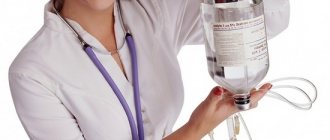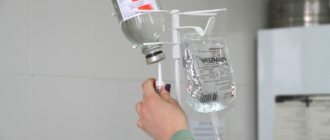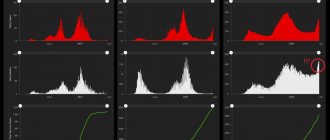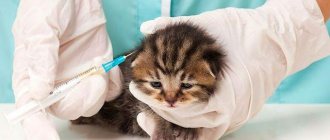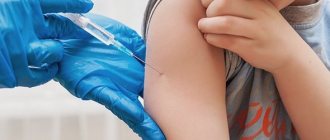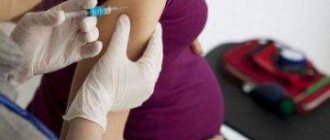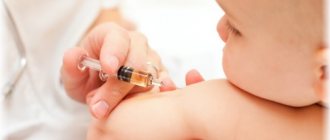Among the many activities for caring for domestic animals (chickens), vaccination against viral and infectious diseases is one of the most important. Despite this, livestock breeders sometimes neglect this procedure and its conditions, hoping for the innate immunity of animals or a happy accident. Preventing epidemics of complex diseases will not only prevent a decline in farm productivity, but will also protect the owner himself from the adverse consequences. Let us consider the main types and methods of carrying out this procedure in our article.
Why do you need to carry out prophylaxis in chickens and broilers?
The need for timely vaccination of chickens is explained by several reasons. Firstly, ordinary, dwarf and broiler breeds have a rather weak protective system and the risk of infection upon contact with a pathogen or the slightest violation of sanitary standards is high. In addition to their feathered counterparts, chickens can infect other types of domestic animals. It should be remembered that the productivity of a sick animal drops by at least 40%, and in advanced cases it tends to zero, as does the profit from the entire farm. And the main reason for vaccination is the high probability of human infection.
Schedule of when chickens are given injections and against what diseases
Don't neglect vaccinating your pets. Remember that treating diseases will require much more effort, time and money than preventing them.
Calculation of vaccine dosage and amount of water
The number of doses of the drug must match the number of birds on the farm. Some of the drug will be lost in the medicator and water supply line. Therefore, it is worth increasing the volume by 300-700 doses per poultry house.
Calculating the number of vaccines is not that difficult. If you need to vaccinate 23,500 chickens, you should take 6 bottles of the drug, 4,000 doses each. As a result, 24,000 doses will be required per poultry house.
See also
Type of placement and stocking density of broiler chickens when kept on floors at homeRead
To get the amount of water, you need to use the formula. To do this, the number of chickens should be multiplied by their age in days and by 1.6. The last indicator is the percentage of input on the dispenser.
The calculation of the required amount of clean water should be carried out by a veterinarian or qualified nurse. This is done right in the chicken coop before making the solution.
At what age should you vaccinate?
Preparations for chicken vaccination have different compositions in accordance with the disease from which immunity is required. Due to their different compositions and different mechanisms of action, vaccines are administered at different ages. It can be most clearly presented in the form of a table:
| Name of the disease | Vaccination age |
| Marek's disease | 1-3 day |
| Salmonella | 1-2 days |
| Coccidiosis | 5-7 day |
| Gumboro disease (infectious bursitis) | 20-25 day |
| Infectious bronchitis | 28-30 day |
| Newcastle disease | 5 week |
| Salmonella enterica | week 6 |
| Mycoplasmosis | week 7 |
| Infectious rhinotracheitis | Week 9 |
| Infectious avian encephalomyelitis | Week 13 |
| Escherichia coli | Before sale (age from 2 months) |
| Reduced egg production syndrome | Not earlier than 2-2.5 months |
| Infectious bronchitis, options | 7-8 week |
Some diseases require repeated administration of the drug; carefully read the instructions or consult a competent specialist. You can read more about how to treat chickens here.
Monitoring vaccination results
In poultry farming, the quality of the vaccine is monitored. To do this, you should perform the following steps:
- Take 20 chickens from different places.
- Check the shade of the tongue - it should be blue.
- Vaccination is considered completed if at least 90% of birds have a blue crop and tongue.
Empty containers containing the vaccine must be boiled for half an hour. After which it is recommended to dispose of them. If the drug remains, it should be put in the cold.
Vaccination of chickens is a very important event that helps to avoid many problems. With the help of correct and timely administration of drugs, it is possible to protect birds from dangerous diseases and maintain their productivity.
What vaccinations are given?
Farmers carry out vaccination in different ways. Some use ready-made medications recommended by veterinarians, while others resort to more complex comprehensive measures. All vaccinations according to the method of their implementation are divided into specific and nonspecific. These two types are not very similar to each other; let’s consider both of them in more detail.
Specific antiparasitic
Vaccinations carried out using specialized medications are called specific. Specially weakened or dead strains of microorganisms are introduced into the chicken’s body, which stimulates the production of the necessary antibodies. This type of vaccination is more suitable for owners of large farms with large livestock, since it does not require lengthy procedures or waste of other resources.
The most important thing for a specific vaccination is to choose the right and high-quality drug that will not harm your bird.
Nonspecific and probiotics
This is a traditional method based on a number of preventive measures:
- saturation of feed and drink with vitamins;
- constant monitoring of the health status of each individual;
- isolation of infected birds;
- quarantine of chickens and newly acquired chickens;
- treatment if necessary.
This method requires close attention from the farmer to his charges, therefore it is suitable only for owners of small livestock. With nonspecific vaccination, the body of broilers and laying hens does not learn to produce antibodies, but its immune system and general resistance to diseases are strengthened. If you do not vaccinate, diseases will definitely manifest themselves. You can read about broiler diseases in this article.
Why do you need to vaccinate chickens and adult birds?
Vaccination is considered the most effective method of preventing various diseases. Moreover, preventing pathologies is much easier than treating them .
Vaccination can be specific and non-specific. In the first case, vaccinations are aimed at preventing infection. In the second, measures are taken to stop the spread of the disease in a timely manner.
Quite often, vaccines have to be administered already in the first days of life of chicks. However, a more precise schedule should be drawn up by a veterinarian. With the help of the introduction of special drugs, it is possible to prevent smallpox, Newcastle and Marek's disease and many other ailments.
What are they vaccinated against?
Chickens are vaccinated to prevent a number of diseases, each of which has its own serums, methods and timing of administration. In the case of some infections, a single introduction of the pathogen is enough to develop permanent immunity. Other diseases have to be fought regularly, constantly updating the protective reaction with repeated vaccinations.
Remember that vaccination can only be given to absolutely healthy individuals. Otherwise, there is a high risk of infection with the vaccinated virus.
On an ongoing basis
As a rule, the frequency of repeated vaccinations is about one year. True, in some cases a complex of various drugs is required, which must be used in the early stages, vaccinate chickens and young animals. The exact timing of vaccination is somewhat blurred, since you need to focus primarily on the overall picture of the incidence of disease among your livestock and neighboring farms.
For bronchial infections
This class of diseases includes various variations of infectious bronchitis, which leads to a weakening of the general tone of chickens (and as a consequence to weight loss and egg production) and poses a threat to the life of the animal. Vaccination against bronchial diseases is carried out in several stages:
- At the age of 5 weeks - Intervent MAS/clone. Dissolved in drinking water.
- At the 8th week of life, the Intervent IB4/91 vaccine is also given with drinking water.
- Week 10 - Intervent MAspas/clone 30, by injection.
- Week 11 - Fort Dodge IB Primer D274.
- Before selling a live specimen - Intervent IBmulti+ND+ED (INAC).
For salmonella
Salmonellosis is one of the most widespread diseases of poultry. Its main danger is that it is transmitted through the oviduct and the eggs themselves and can threaten human health. The salmonella vaccine is also given systematically:
- 1-2 days after hatching, Lohmann TAD VacE is given along with drinking water.
- The same medication is used at 6 weeks of life.
- The last dose of this serum is carried out before sale or a month before slaughter of the bird.
Vaccine associated against avian salmonellosis "Avivak Salmovak" for the prevention of salmonellosis, colibacillosis and avian pasteurellosis.
From the plague
The plague vaccination is given between 3 and 6 weeks of age and is repeated annually. The preparation used is a 20% suspension of formol-hydroxyl-aluminum serum, popular since the times of the USSR. The more expensive and effective formol fetal vaccine is given at the same age.
From adenovirus
This DNA virus causes reduced egg production syndrome-76 (DEL) in birds. Chickens are given the Intervent IBmulti+ND+ED (INAC) vaccine against adenovirus. Vaccination is permissible only for livestock aged 2-2.5 months.
One-time
The resistance of the bird's body to certain strains of pathogenic bacteria and viruses is maintained from the first vaccination for life. In this case, the immune system “remembers” the pest and in the future, white blood cells (leukocytes) instantly recognize the threat and neutralize it before the infection spreads. The most important thing here is not to miss the vaccination time.
Coccidiosis
Vaccination of chickens against Coccidiosis is carried out no later than a week from the moment of hatching, and in an industrial incubator on the very first day. When purchasing chickens, inquire about this procedure; vaccination of older birds is ineffective. For vaccination, coccidiostatic drugs are used, which are mixed into the feed of the chicks.
Newcastle diseases
Clinically healthy birds over 2 months of age are subject to immunization, regardless of their breed and productivity.
Certain drugs specifically against Newcastle disease are no longer on the market. Today, to prevent this infection, the same serum is used as for bronchial diseases - Intervent MAspas/clone 30 (injection). This is explained by the similar nature of pathogenic bacteria, as well as the coincidence of the timing of the necessary procedure.
Laryngotracheitis
The drug Merial Nemovac is administered by dilution in water to relatively adult individuals at 9-10 weeks of life. The pathogen of laryngotracheitis is resistant to the primary antibodies of the chicken body, so at the time of vaccination the bird must be absolutely healthy (otherwise it will not be immunity, but infection).
Marek's diseases
Only incubator vaccination is effective against Marek's disease. Vaccination is carried out immediately after the chicks hatch or no later than 1 day . For this reason, one of the main points in the veterinary book that is worth paying attention to is considered to be a certificate of this procedure.
How to choose a vaccine
To choose an effective drug, you need to take into account many criteria. Only in this case will vaccination be effective.
Common parameters
Vaccinations for laying hens can be mandatory or optional. In the second case, the decision on the advisability of vaccination depends on the following factors:
the opinion of the poultry farmer - the desire for precautions or a tendency to save; place to buy birds; purpose of bird breeding; epidemiological situation in the region.
Human factor
If a farmer is inclined to save money, he is willing to take some risks. In such a situation, only mandatory vaccines are given
At the same time, it is important to monitor the condition of the birds so as not to miss the development of the disease. It is much easier to cope with the disease at the initial stage
If a poultry farmer wants to protect his livestock from diseases as much as possible, it is worth doing optional vaccinations.
Farm location
If there is no specific infection on the farm or in the area, it is not necessary to vaccinate against it. To determine the list of dangerous diseases, you should contact the relevant authority - the state veterinary clinic. It is there that you can obtain information regarding the prevalence of pathologies among birds.
It is worth checking for diseases that occur in neighboring areas. Chickens have a fast metabolism. That's why they get sick very quickly. This means that the infection can quickly spread throughout the surrounding area. In such a situation, it is recommended to play it safe.
Productive orientation of chicks
The list of vaccines for laying hens and broiler breeds is different. Meat varieties of birds do not need to be vaccinated against adenovirus, because this infection leads to a decrease in egg production.
It is worth considering that the disease spreads faster among meat breeds. They live in more crowded conditions than egg-laying hens. The list of specific vaccinations depends on specific characteristics.
Place of purchase
The issue of vaccination can be resolved when purchasing chickens. If they are purchased from a poultry farm, you can be sure that the required minimum vaccinations have been carried out.
If birds are purchased from private individuals in small farms, it is worth focusing on their integrity. Therefore, the question of the availability of vaccinations must be clarified in advance. It is worth considering that high-quality and fully vaccinated chickens cannot be cheap.
Techniques
The choice of vaccination method often depends on the recommendations for the use of a particular drug. The deciding factor may also be the number of flocks (it is difficult to manually inject 100 or more chickens). Some of the methods do not even require direct contact with a person.
Intramuscular
The bird experiences this procedure the hardest. You will need an assistant who will securely fix the chicken's body so that it does not harm itself during the injection. It is important to choose the right location: find the keel bone that divides the rib cage. Insert the needle into the muscle slowly, at an angle of 45 degrees. If blood comes out after inserting the needle, it means the location was chosen incorrectly and you need to stop the procedure and then repeat it in the desired part of the body.
Dropping it into a chicken's eyes
This method is more painless and for this reason is used for vaccinating very small chickens. You will need a graduated pipette. No more than 0.03 grams of the drug should get into each eye of a chicken (including one day old). The serum temperature varies between 4 and 7 degrees Celsius.
Dilution in water: drinking - home scheme
In this case, the drug is diluted with drinking water in the required ratio. You can read about nipple drinkers for chickens here. Before vaccination, remove drinkers and any water sources so that the birds are thirsty by the time the procedure is performed. The watering method (water, water, water) has a big drawback - after 2 hours the vaccine becomes invalid, which means the birds must drink all the water in a short period of time.
Using a sprayer
Technology suitable for large poultry farms. The drug is diluted with distilled water and distributed throughout the livestock using a sprayer. Before the procedure, turn off the lights to reduce the birds' physical activity. You can return the lighting no earlier than 10 minutes after spraying.
Injecting the drug into the wing
The introduction of the vaccine into the wing is effective due to the developed network of blood vessels in this part of the body. Secure the bird and wing, and then insert the needle between the feathers into the membrane. The fact that the procedure was carried out correctly is evidenced by scars that appear at the injection site after 6-7 days. The serum is administered only in diluted form.
Approximate poultry vaccination schedule
To achieve good results during vaccination, you should strictly follow the sequence of drug administration.
Intramuscular
When administering the drug using this method, it will not be possible to do without an assistant. Intramuscular medications are used to treat decreased egg production and Marek's disease. To carry out the procedure, you should perform the following steps:
- Prepare the drug. You need to take it out of the ice and draw the daily dose of the drug into an insulin syringe.
- Secure the bird so that it cannot escape.
- Find the insertion area on the chest. Typically the injection is performed 2.5-4 centimeters from the keel bone.
- Wipe the area with a cotton pad soaked in alcohol.
- Insert the syringe at an angle of 45 degrees. The depth should be 1-1.5 millimeters. Gently press the plunger to ensure smooth injection of the substance.
- If a drop of blood appears, disinfect the injection area again.
Dropping into the eyes of a hen, laying hen, chick
When using the tool using this method, you must do the following:
- Prepare the medicine. Remove the drug and solvent from the bottle, then put them into a pipette.
- Secure the chicken, paying attention to the head.
- Drop 0.03 milliliters of the drug into the eyes.
- Hold the chick so that the solution enters the body.
Dilution in water
In this case, do the following:
- For a certain time before vaccination, you should get rid of drinking bowls. By the time the drug is administered, birds should be thirsty.
- Mix the drug with water according to the instructions.
- Immediately after this, give the chickens access to the drinking bowl.
- Make sure that the chickens drink the solution within 1.5-2 hours, otherwise it will become ineffective.
Using a sprayer
To implement this method, you should do the following:
- Dilute the substance according to the instructions. For 100 chickens you will need about 50 milliliters of water.
- Spray the chicks using a coarse or fine aerosol.
- Make sure that the product reaches all birds.
This method is often used in large farms, as it helps to vaccinate an impressive number of birds.
Injecting the drug into the wing
To carry out the procedure, do the following:
- Prepare the vaccine.
- Secure the chicken. To do this, you need to hold the head with your thumb, and move the wing to the side with your middle and index fingers.
- Wipe the injection site with alcohol.
- Inject at an angle of 30 degrees. It is recommended to press the piston very slowly.
- There is a risk of a bubble appearing in the injection area. Over time it will go away on its own.
Rules to follow after vaccination
After vaccinating chickens, you must:
- disinfect used instruments;
- dispose of drug bottles;
- Constantly monitor the condition of the chickens; the norm is a reaction in the form of sneezing or difficulty breathing. If there is wheezing, then this is bad. Read more about how to treat chickens if they sneeze and wheeze in this material;
- If other reactions occur, contact a veterinarian;
- Symptoms last no more than 3 days, otherwise you should consult a veterinarian.
Nonspecific methods of disease prevention
Prevention of disease in poultry may include not only vaccination, but also compliance with a number of rules to preserve the health of your birds.:
- With a small flock, it is easy to monitor the health of each bird.
- Timely detection of any changes in the behavior and appearance of chickens will allow the individual to be isolated in time and its treatment to begin.
- When purchasing a new batch of hens or chicks, you should first quarantine them, placing them separately from the main flock.
- Strengthening the immune system through proper balanced nutrition, vitamin and mineral supplements in the diet will also help avoid a number of diseases.
- Regular cleaning and disinfection of the chicken coop, avoidance of overheating, hypothermia and drafts, compliance with standards for keeping poultry - such preventive measures are a good alternative to some types of vaccination.
The use of Chiktonik for poultry for therapeutic and prophylactic purposes. Characteristics and properties of the drug
Read
Baytril for chickens in the treatment of infectious diseases of the gastrointestinal tract and respiratory system. Properties of the drug and regimen of use
More details
Enrostin for chickens - quick relief from salmonellosis, mycoplasmosis and other infectious diseases
Look
Enroflon is an antibiotic that has proven itself in the treatment of fungal and bacterial infections
More details
conclusions
- Vaccination of chickens (prevention) allows you to avoid the spread of diseases dangerous to birds and humans when keeping chickens. Read more about proper chicken keeping by following the link.
- All vaccinations (antiparasitic, probiotics) are given at different times, some once, others annually.
- There are different methods (schemes) of vaccinations that are suitable for farms of different sizes.
- After vaccination, it is important to monitor the condition of the chickens for some time, as well as dispose of all used utensils.

